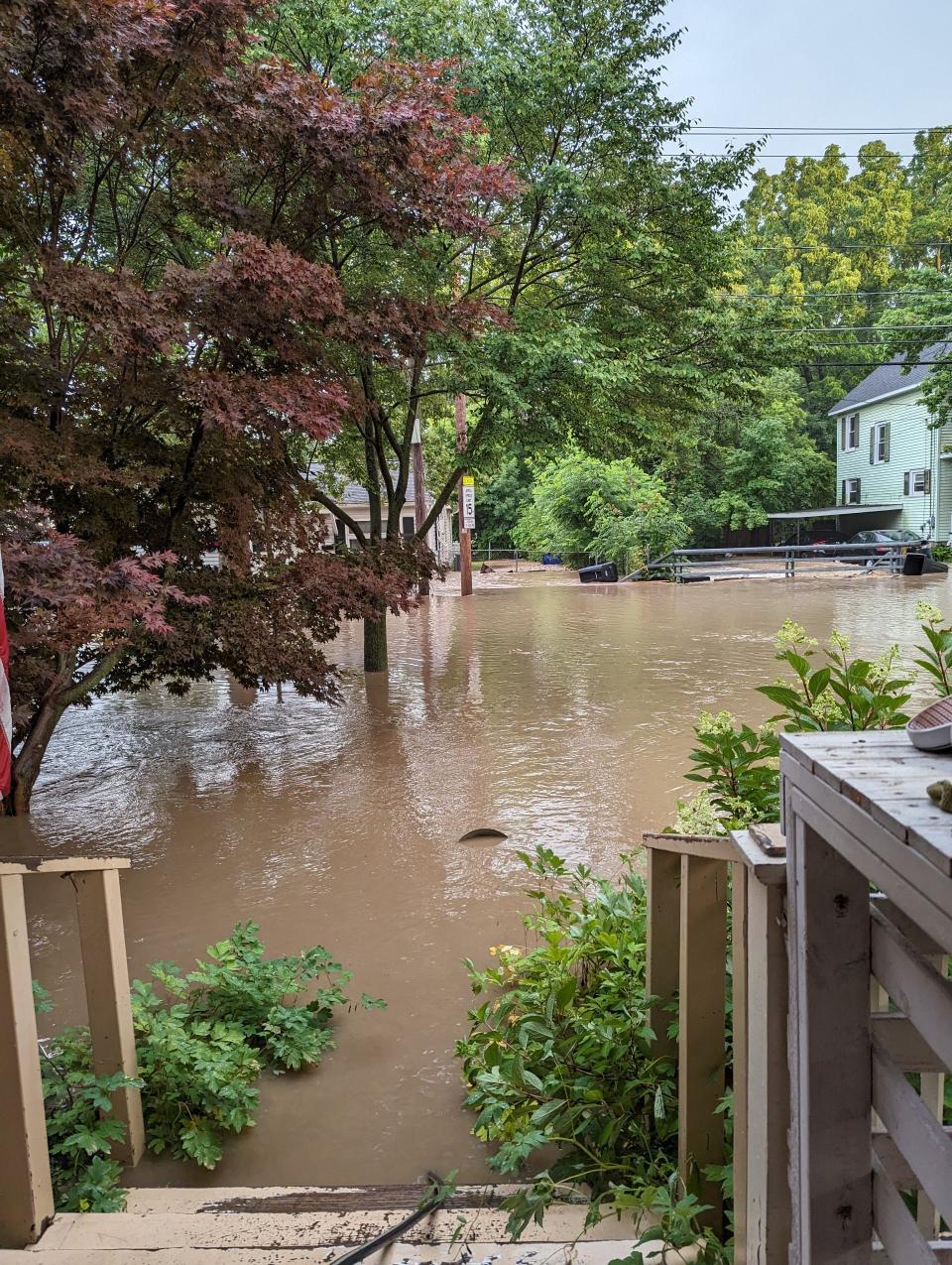The question is not if a rainstorm of the magnitude experienced July 9, 2023, that resulted in widespread flooding in the town of Canandaigua and Sucker Brook corridor of the city will happen again.
The question is, based on climate change and what some point to as an increasing number of severe storms, rain or otherwise, when will it happen again?
And then what?
Gov. Kathy Hochul on a visit in late June to the Rochester area recalled walking several streets in the city of Canandaigua the day after the rainstorm ravaged the area last year.
“It was devastating to see the people going through their waterlogged wedding albums and photos of their children, just littering the streets,” Hochul said. “It was heartbreaking what communities like Canandaigua and other communities across the state endured.”

Several mitigation projects completed in recent years helped prevent further heartbreaking devastation to homes and properties, local officials said. More are in the works, but more are needed, they said.
According to Canandaigua Town Supervisor Jared Simpson, the city and town have a joint account for Sucker Brook mitigation projects with about $230,000 in it. Funding is also available in other town accounts for such projects, including its open space and farmland protection funds.
In the city’s 2024 budget, $150,000 is set aside for flood mitigation for a to-be-determined project, City Manager John Goodwin cited as an example.
Some projects ready to start soon have state and federal funding but require local municipalities to kick in their share of funding and/or provide in-kind work and personnel.
How much money should we set aside for local disasters?
Going forward, should municipalities be setting aside even more money for emergencies or mitigation projects?
The state has provided more than $1 million in grant funding in the recent past, including, for example, the Sucker Brook revitalization project on Routes 5 and 20 in the town of Canandaigua on property near Town Hall. The project also was made possible when the landowners granted easements, or the rights for the town to use the property.
In some areas of New York, the state is assisting those who live in low-lying areas to build up the foundations of their homes, especially those who live along rivers and streams, Hochul said.
“We are in a new era of climate change,” Hochul said. “Extreme weather is the new normal.”
Having money and other resources set aside is great, but the hope is residents are willing and open to using their wooded or wetlands for mitigation projects or to sell portions of their property outright. Because without that cooperation, a municipality can’t do as much of the flood-prevention preventation work as it could because it’s private land, Simpson said.
For now, leaders are willing to negotiate and make their best case for their need to the private owners. In the meantime, having money set aside and projects ready to go once a town gets the right use the land is important.

“As weather changes and these weather events get more intense, areas where we have built and areas where we have lived are going to be at risk,” Simpson said. “Every municipality should be nimble enough to look for opportunities to participate in projects or purchase the equipment to start doing some of these projects themselves.”
Is there the political will to prepare?
Significant discussions have been ongoing among town leaders like Simpson who serve on the Ontario County Board of Supervisors to provide greater county funding toward such watershed projects.
“We’re getting there, but we’re not there yet,” Simpson said. “At least we’re having the conversation and people are more aware that there is a need.”
Maria Bucci, a former Canandaigua city councilmember and West Gibson Street resident whose home was damaged in the flood, agreed that it’s important to stop kicking the can down the road and begin to make necessary changes based on current storm data.
It’s a hot topic that’s not just on minds in Canandaigua, but elsewhere in the county. State Routes 364 and 64 in the Crystal Beach area of Gorham and Bristol, respectively, were closed temporarily after an intense storm blew through the area early the morning of June 30.
Even moving beyond the county’s borders, Hochul said, this needs to be a statewide approach.
“We are the first generation to really feel the effects of climate change,” Hochul said. “We’re also the last generation that can do something meaningful about it.”
To do that, public policy needs to change, said Jim Ochterski, whose Park Avenue home was flooded a year ago.
Ochterski said he would like to see municipal leaders and planners place a lot more thoughtfulness about where water goes after it leaves a new development. Increased development coupled with increased rainfall rates just leads to more water flows, more debris flows, more clogged bridges and more water backing up, with homes and businesses bearing the brunt.
“The Canandaigua region got a wakeup call last July,” Ochterski said. “We could become the community that dismissed the wakeup call and went back to business as usual, or we could become the community that woke up to the signs that things are now different. Public policy needs to be very different in order to keep the quality of life and prevent the city of Canandaigua from earning a reputation as a community that is subjected to climate disaster more easily than it should.”
Mike Murphy covers Canandaigua and other communities in Ontario County and writes the Eat, Drink and Be Murphy food and drink column. Follow him on X at @MPN_MikeMurphy.
This article originally appeared on MPNnow: Canandaigua, others try to limit flood damage. Can more be done?
EMEA Tribune is not involved in this news article, it is taken from our partners and or from the News Agencies. Copyright and Credit go to the News Agencies, email news@emeatribune.com Follow our WhatsApp verified Channel





